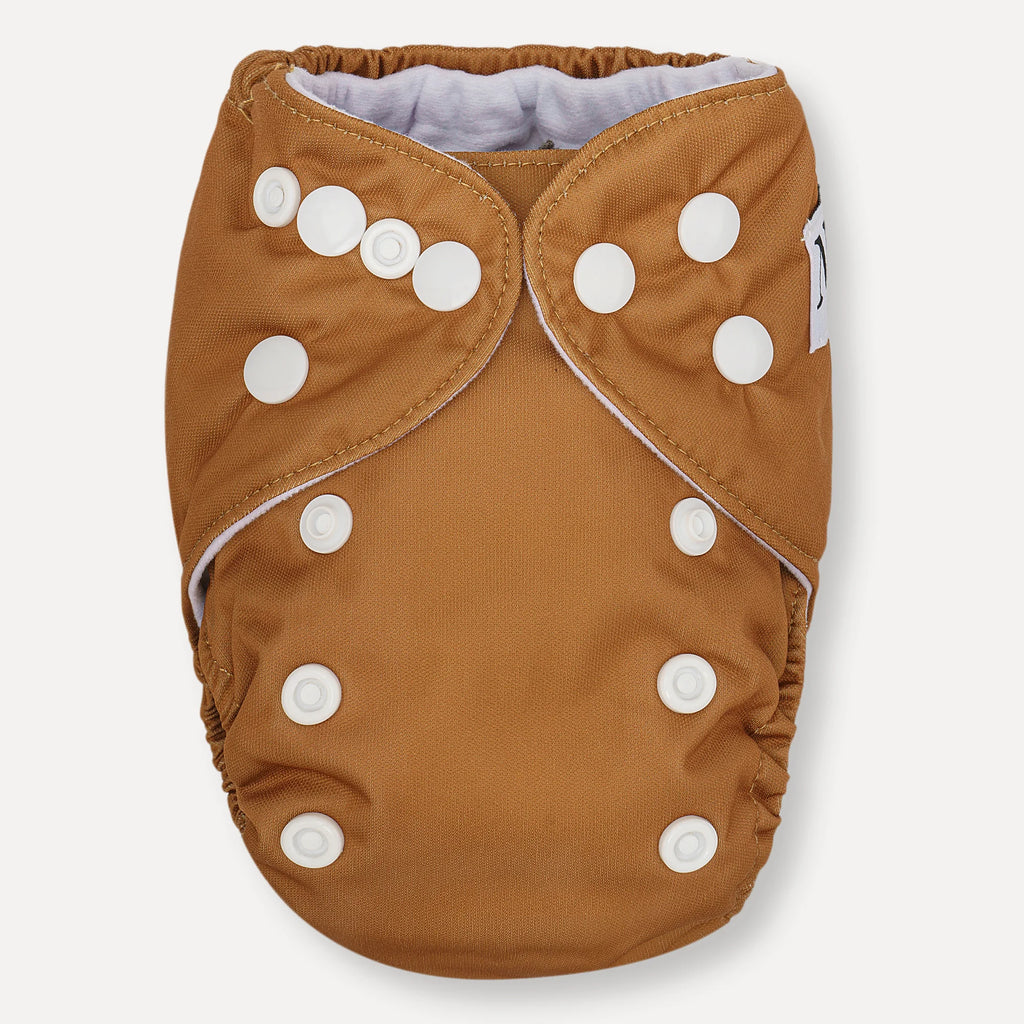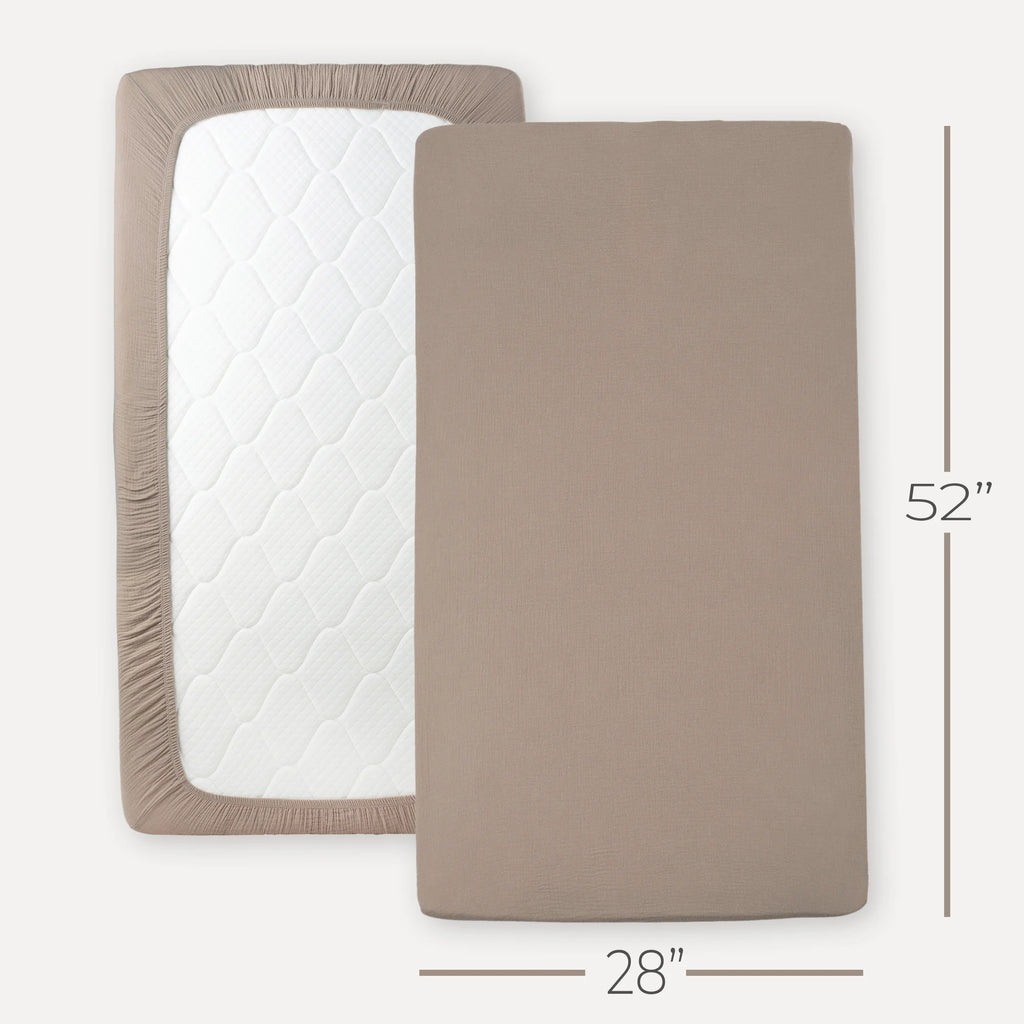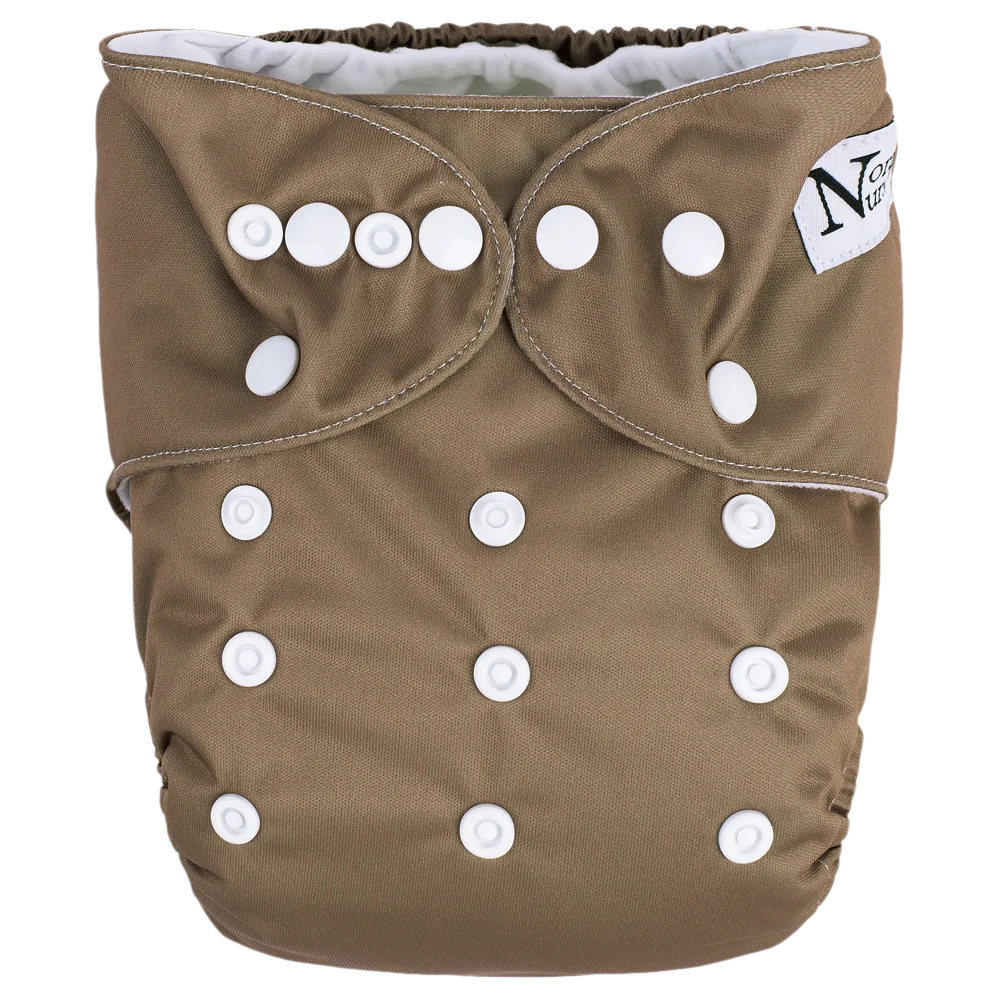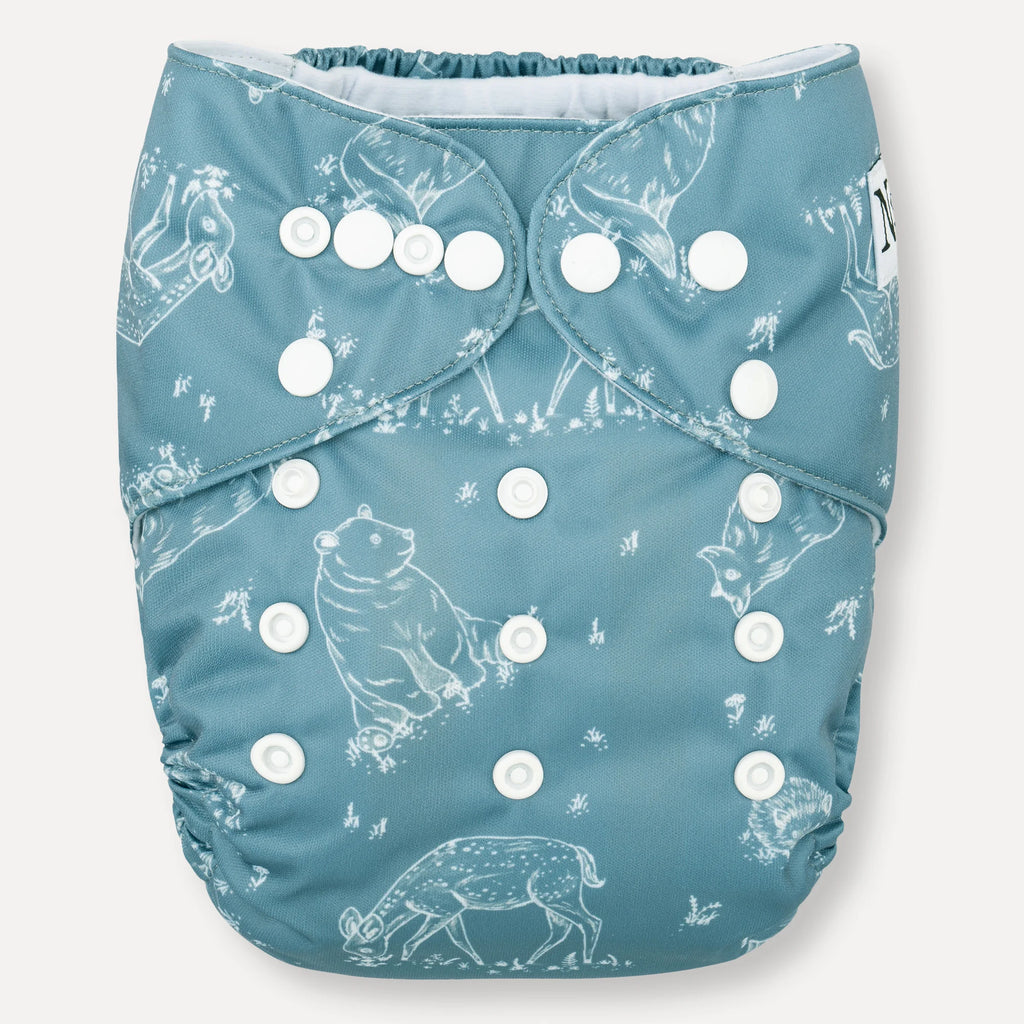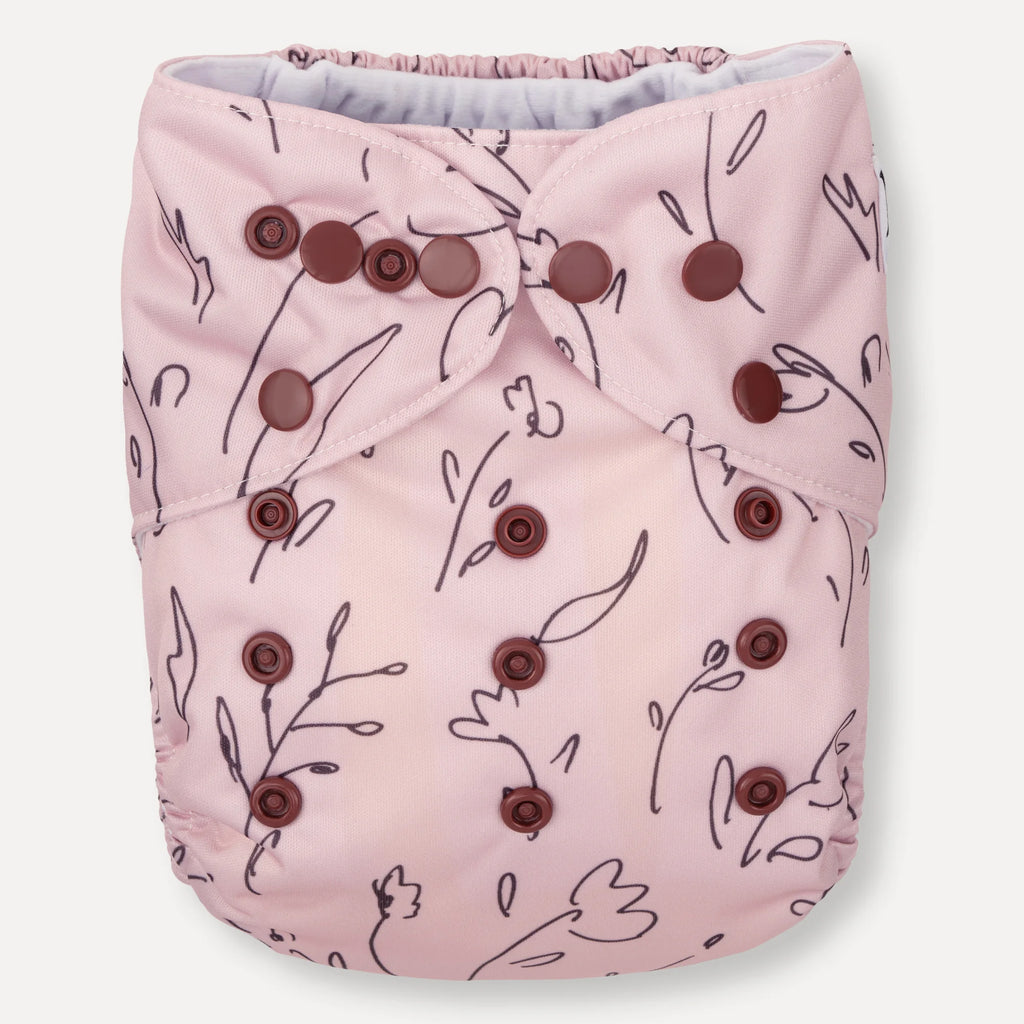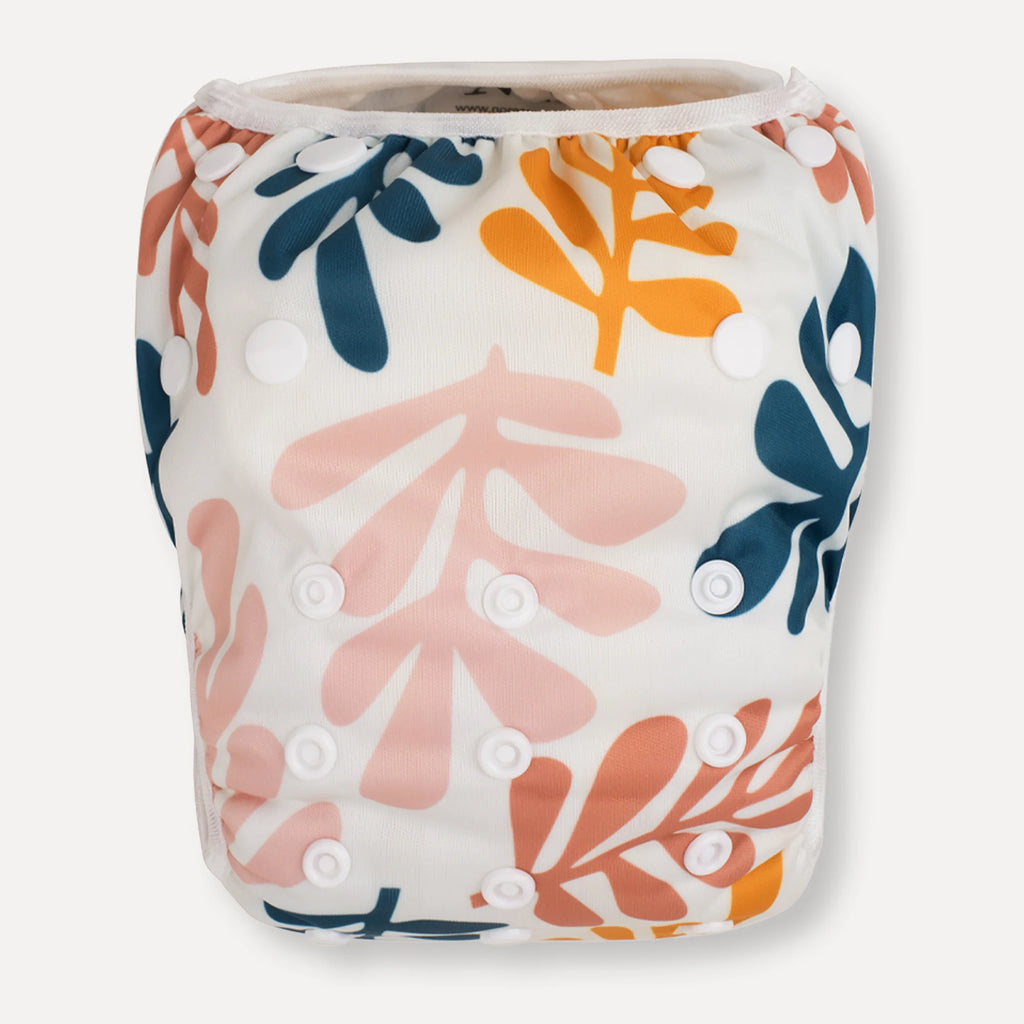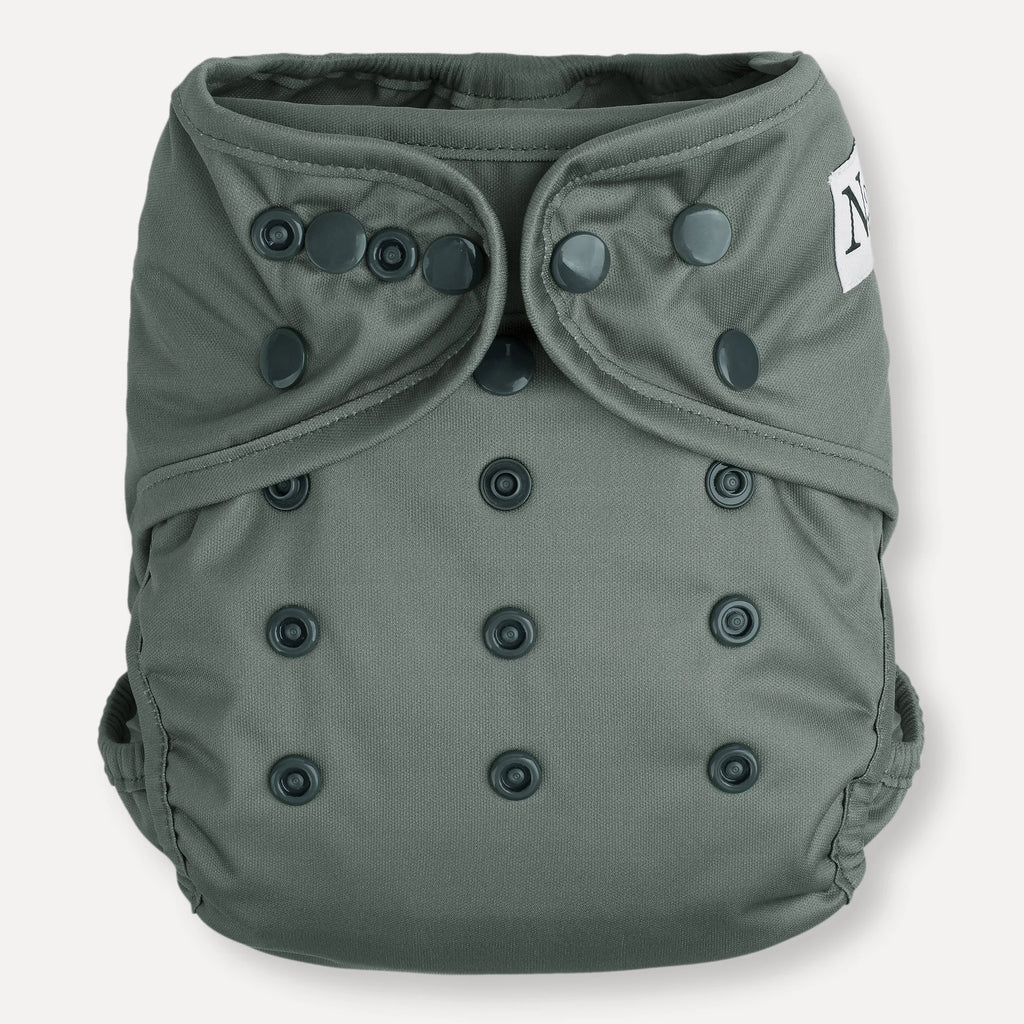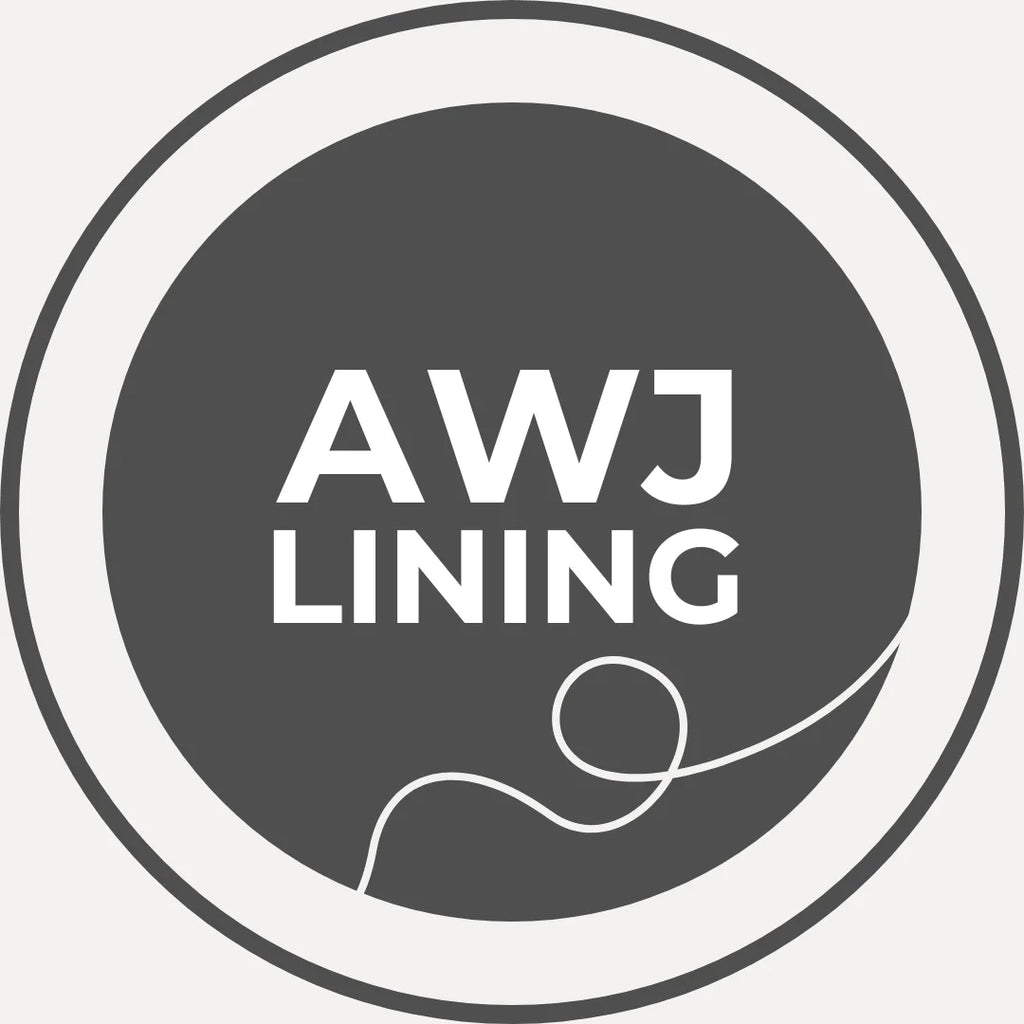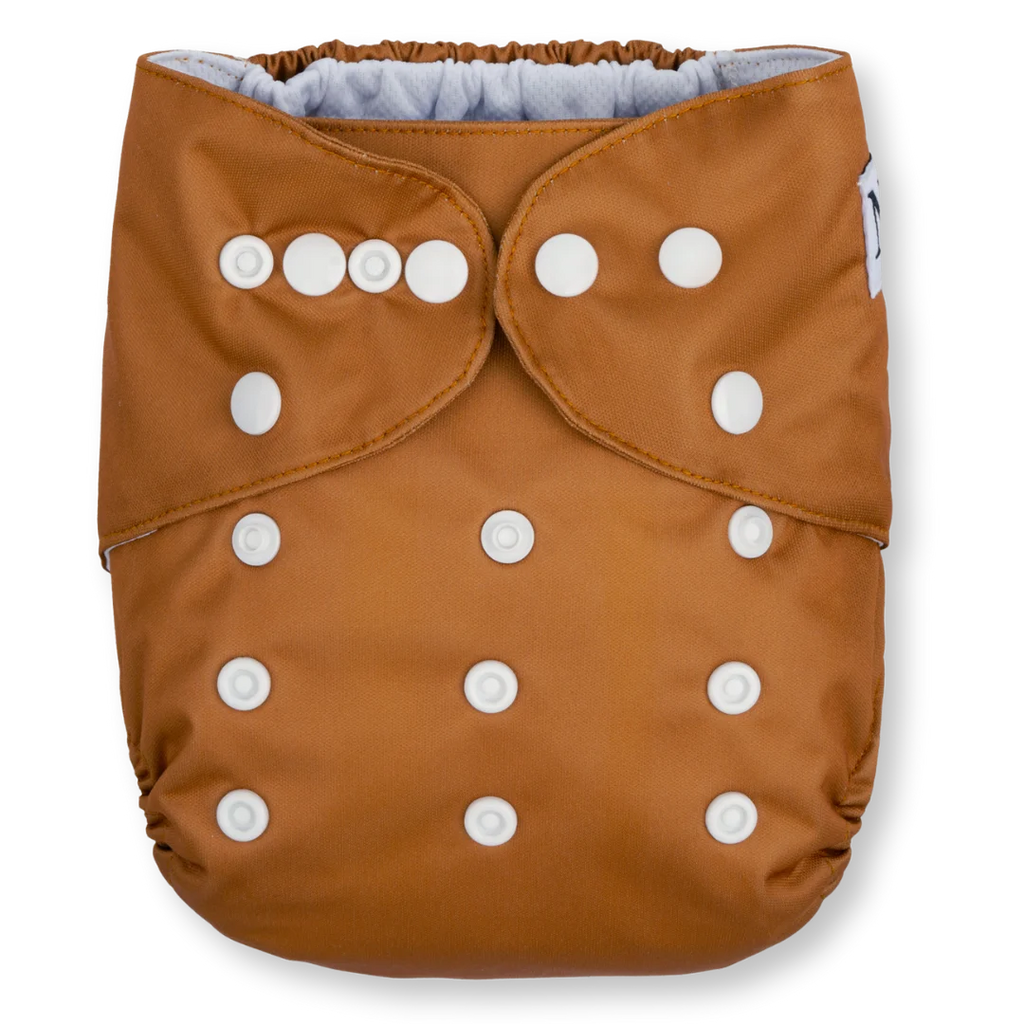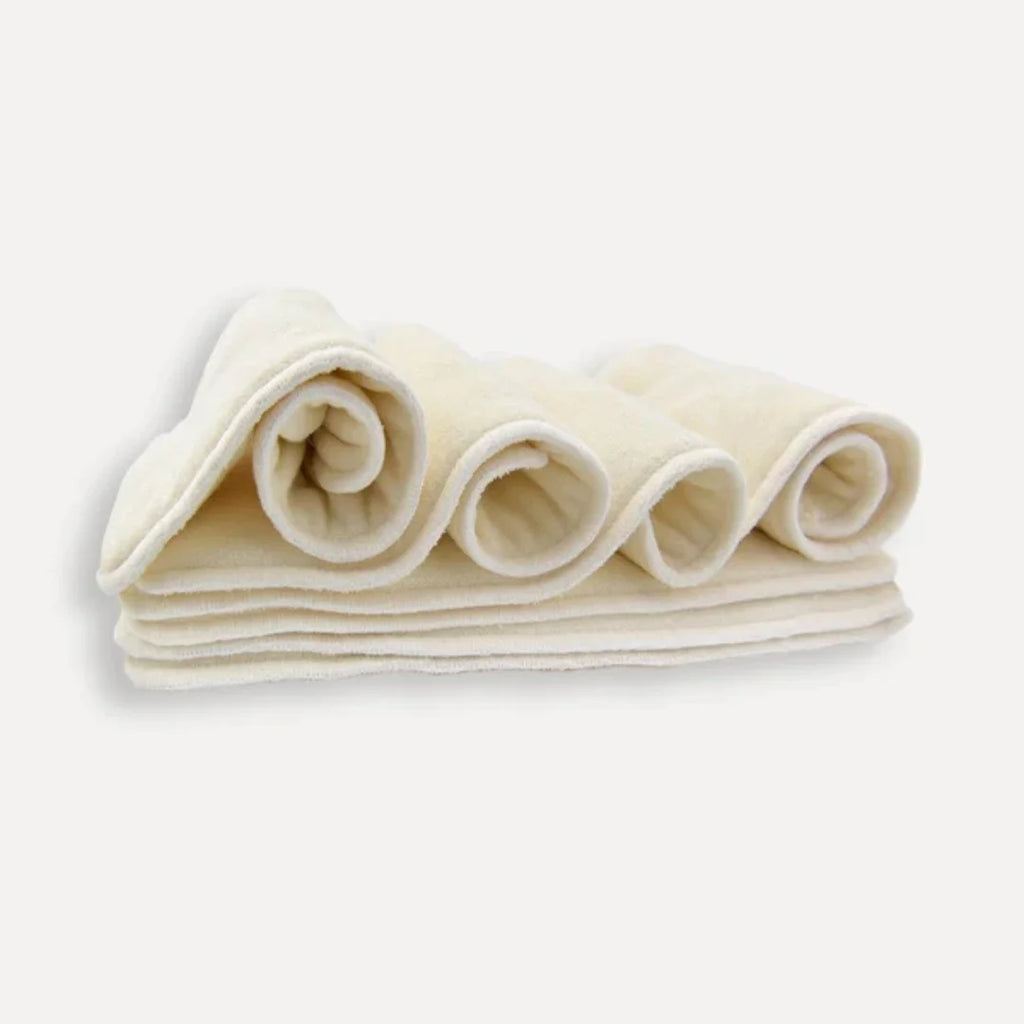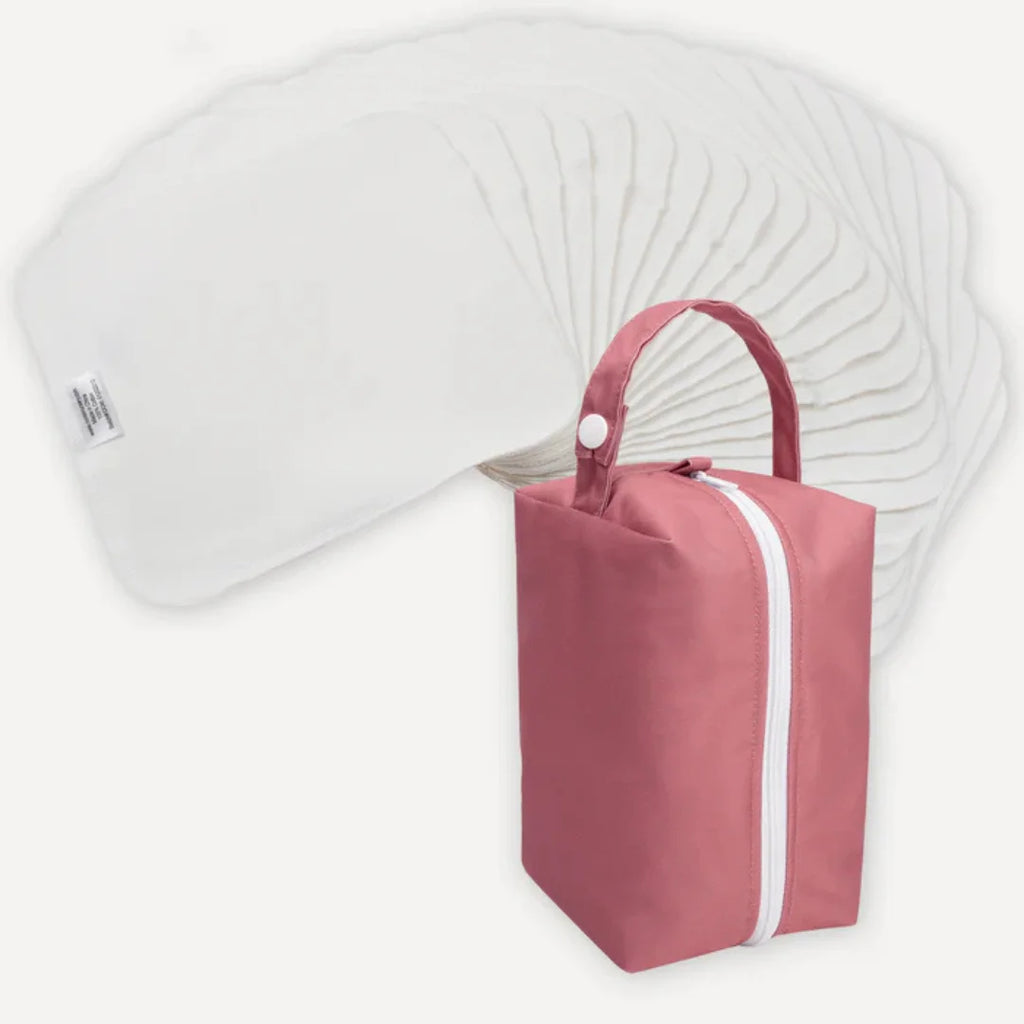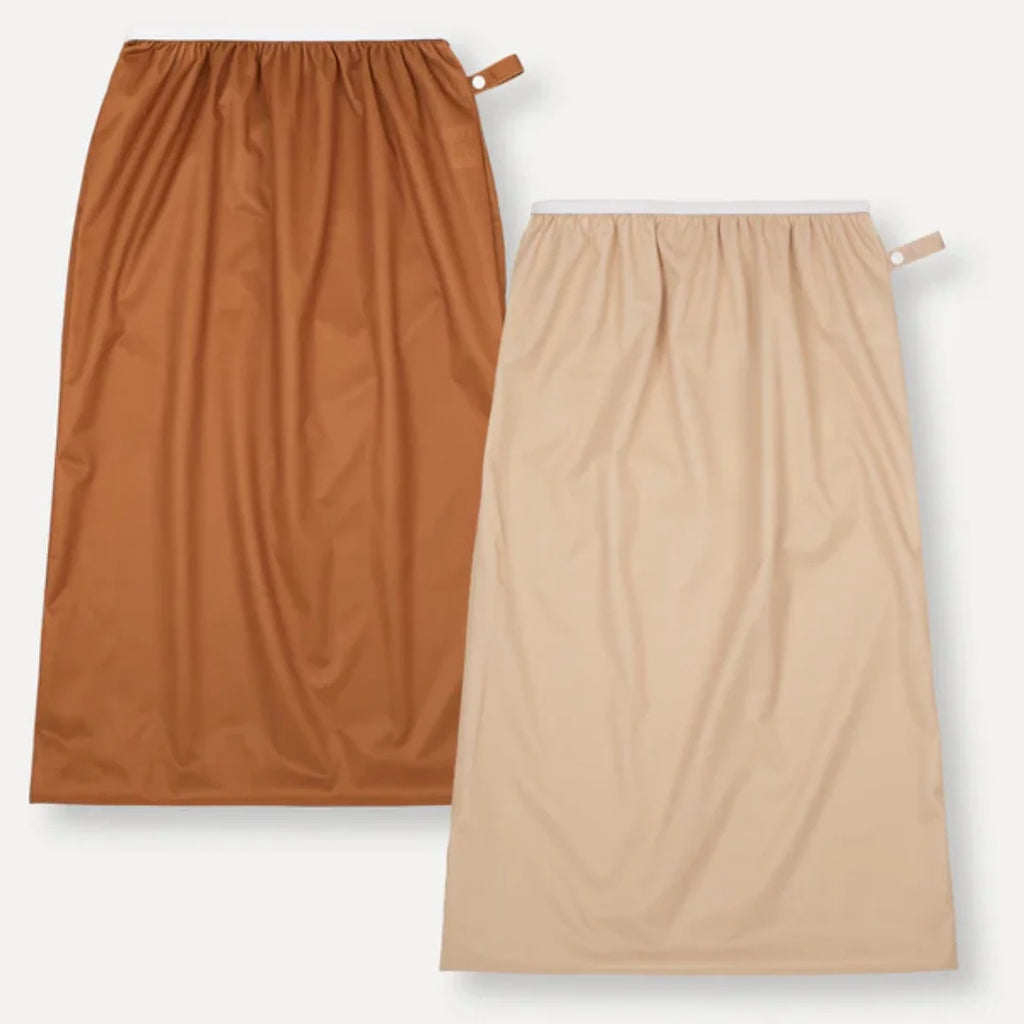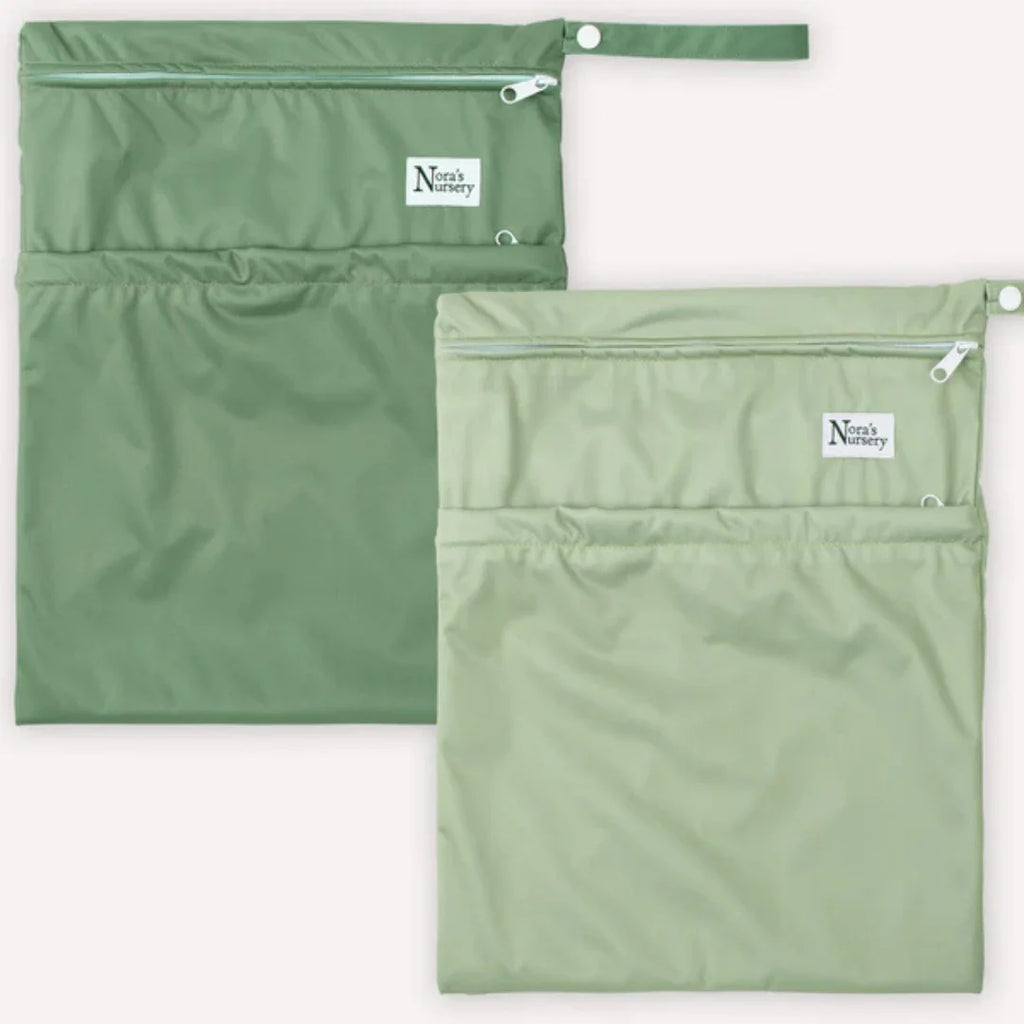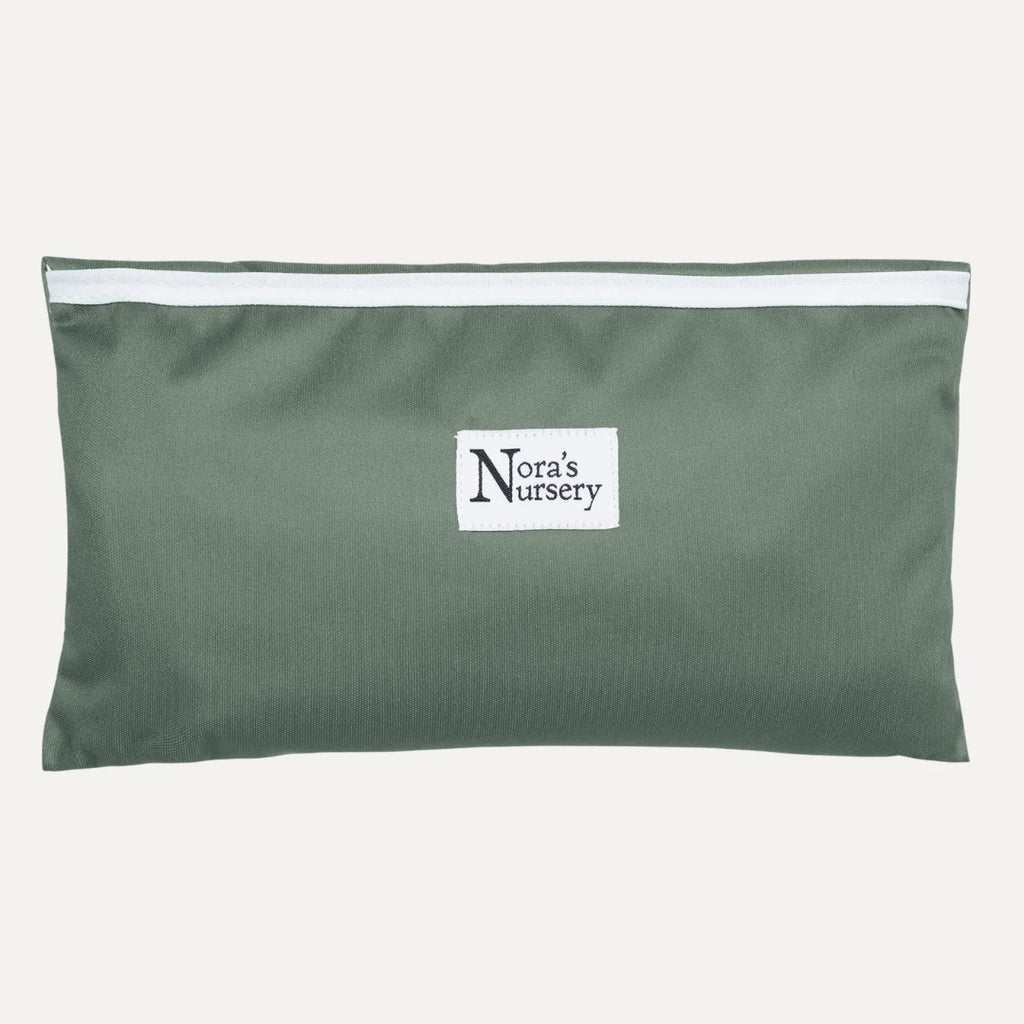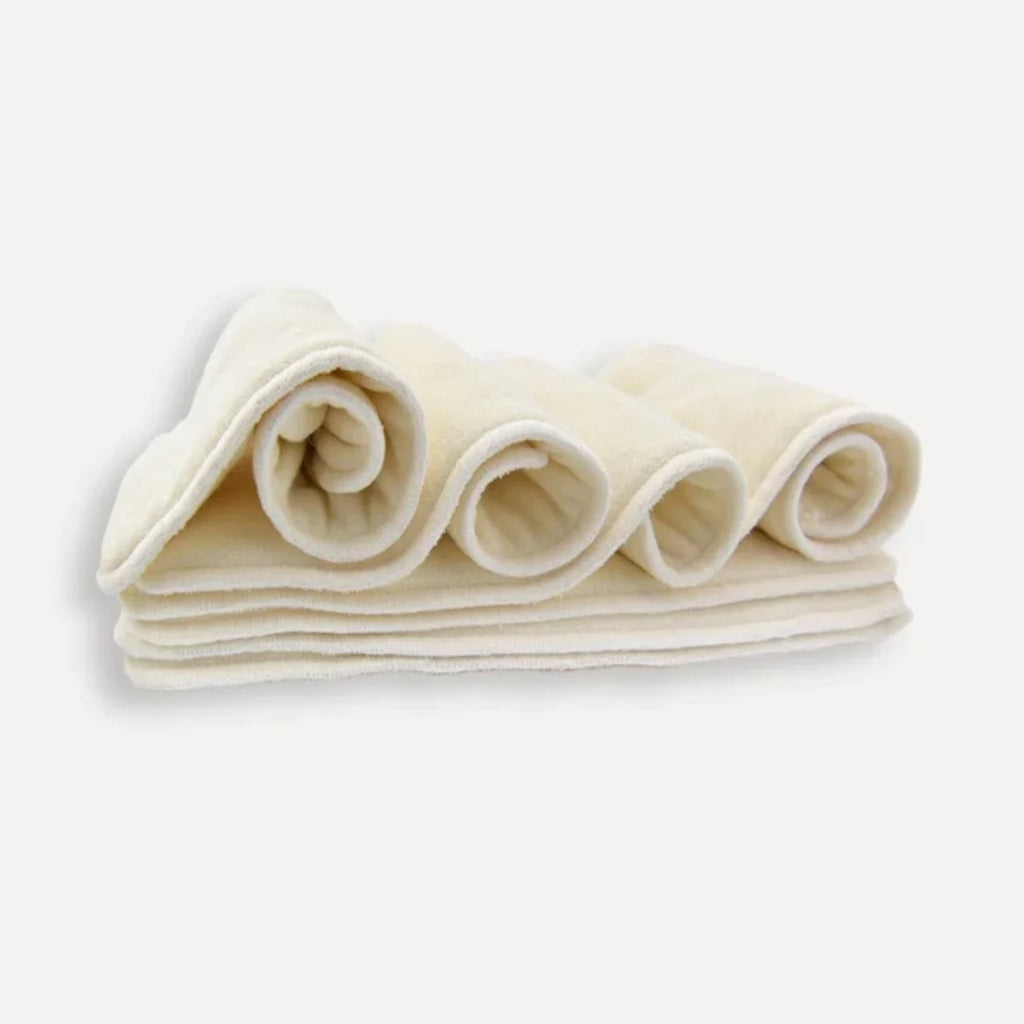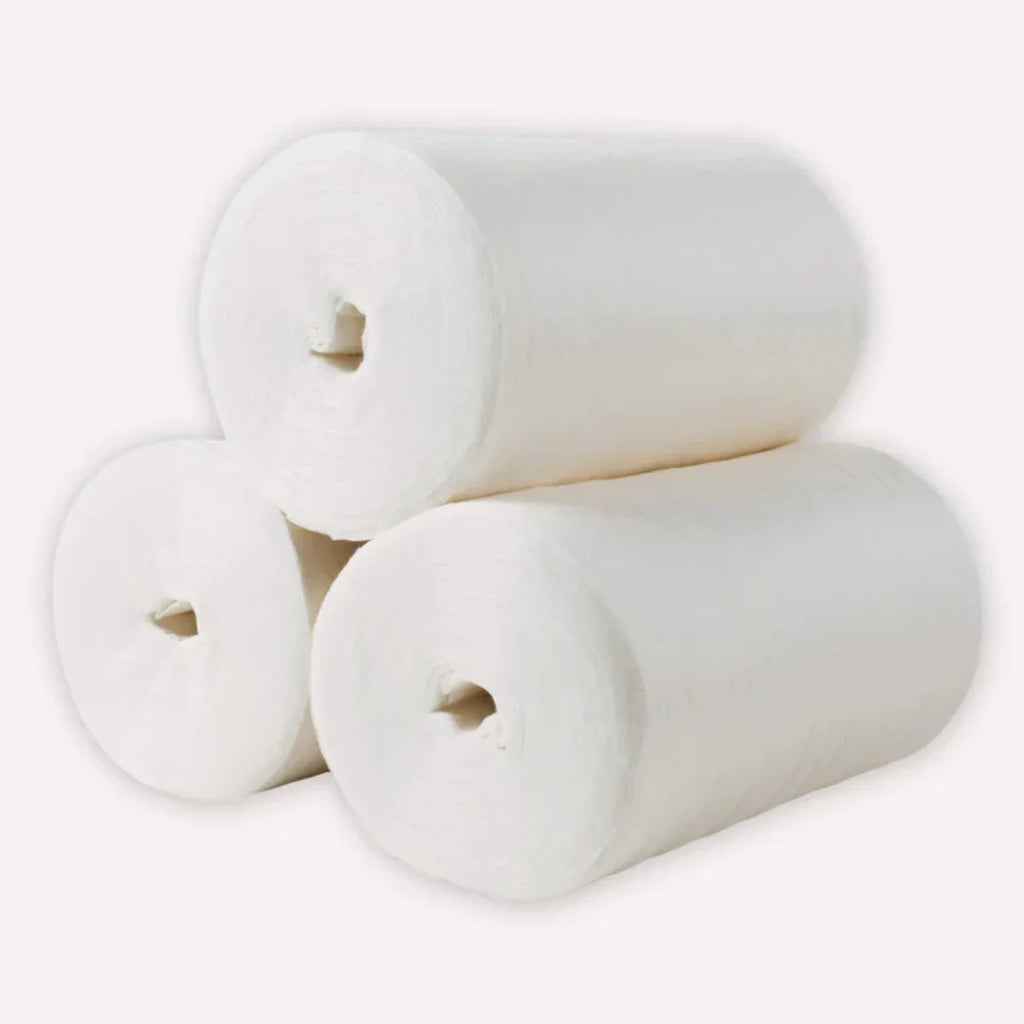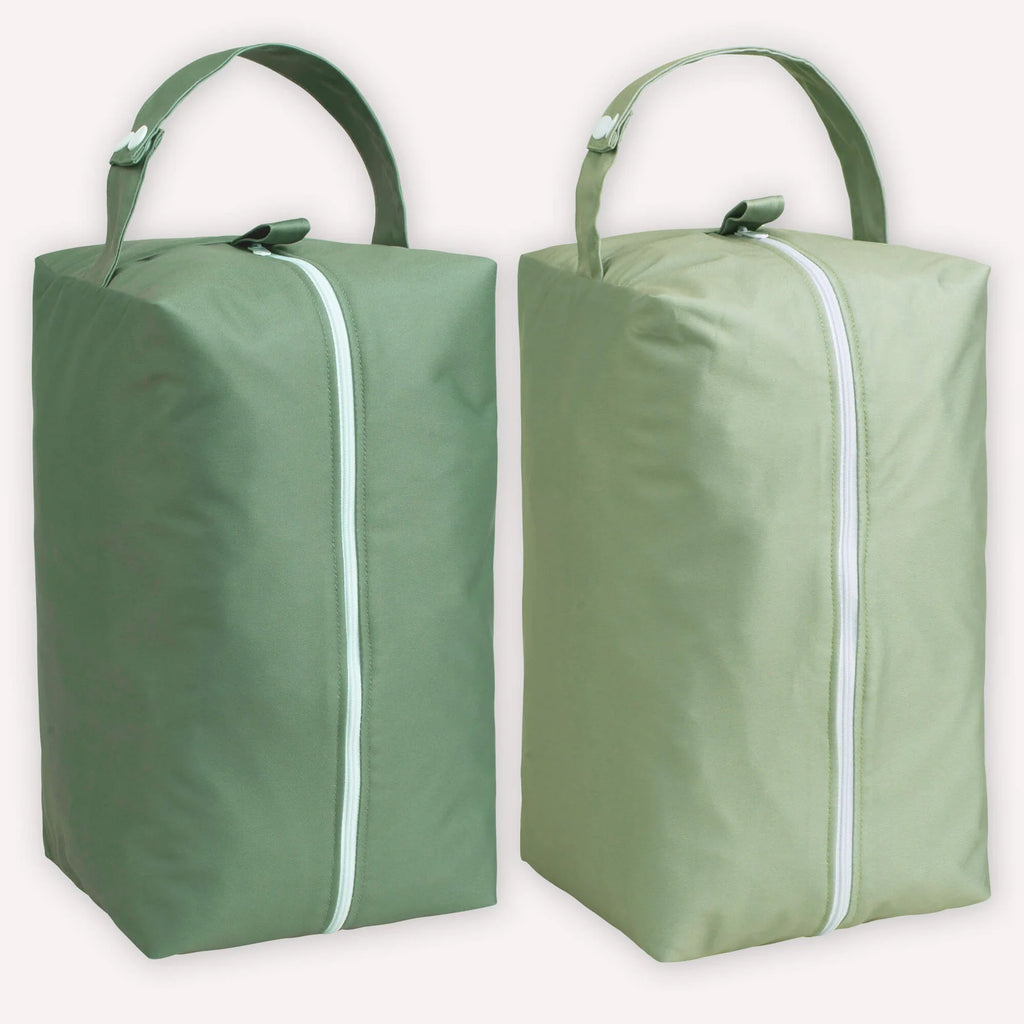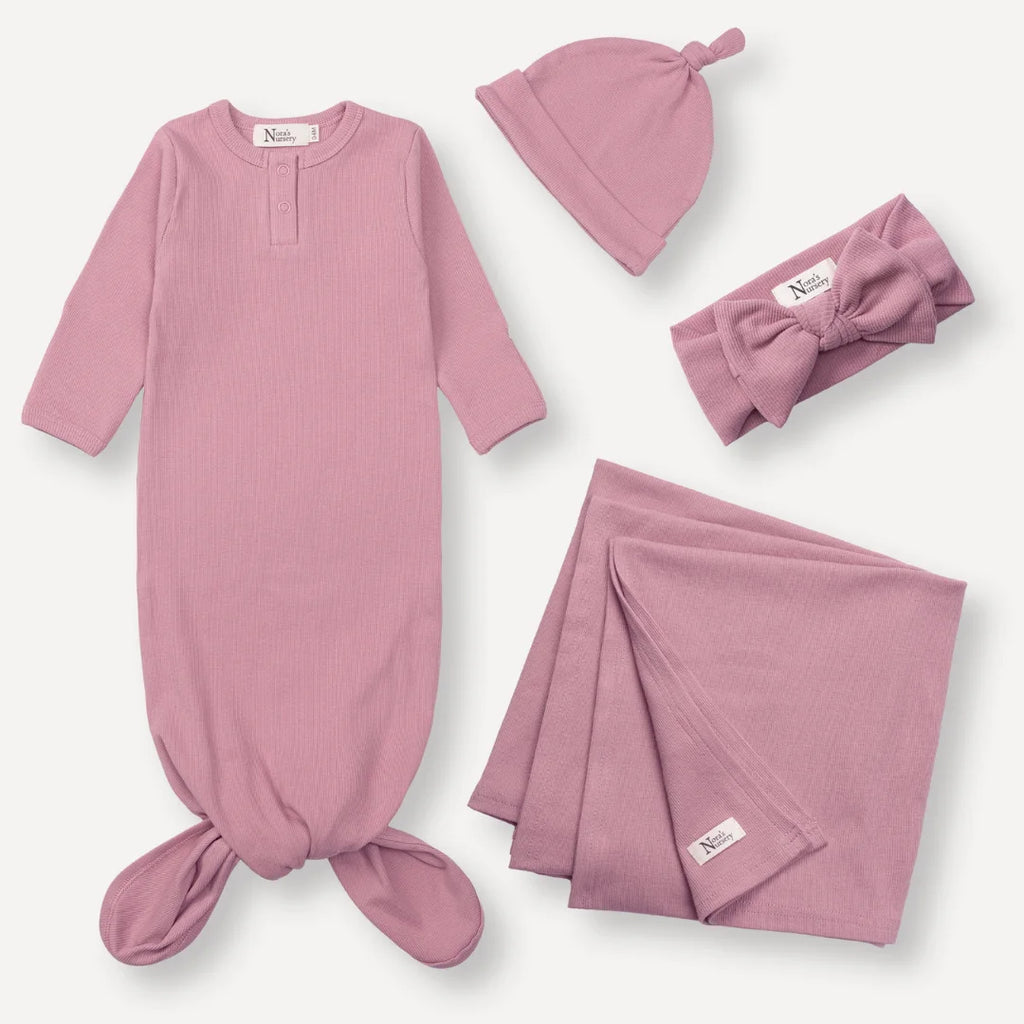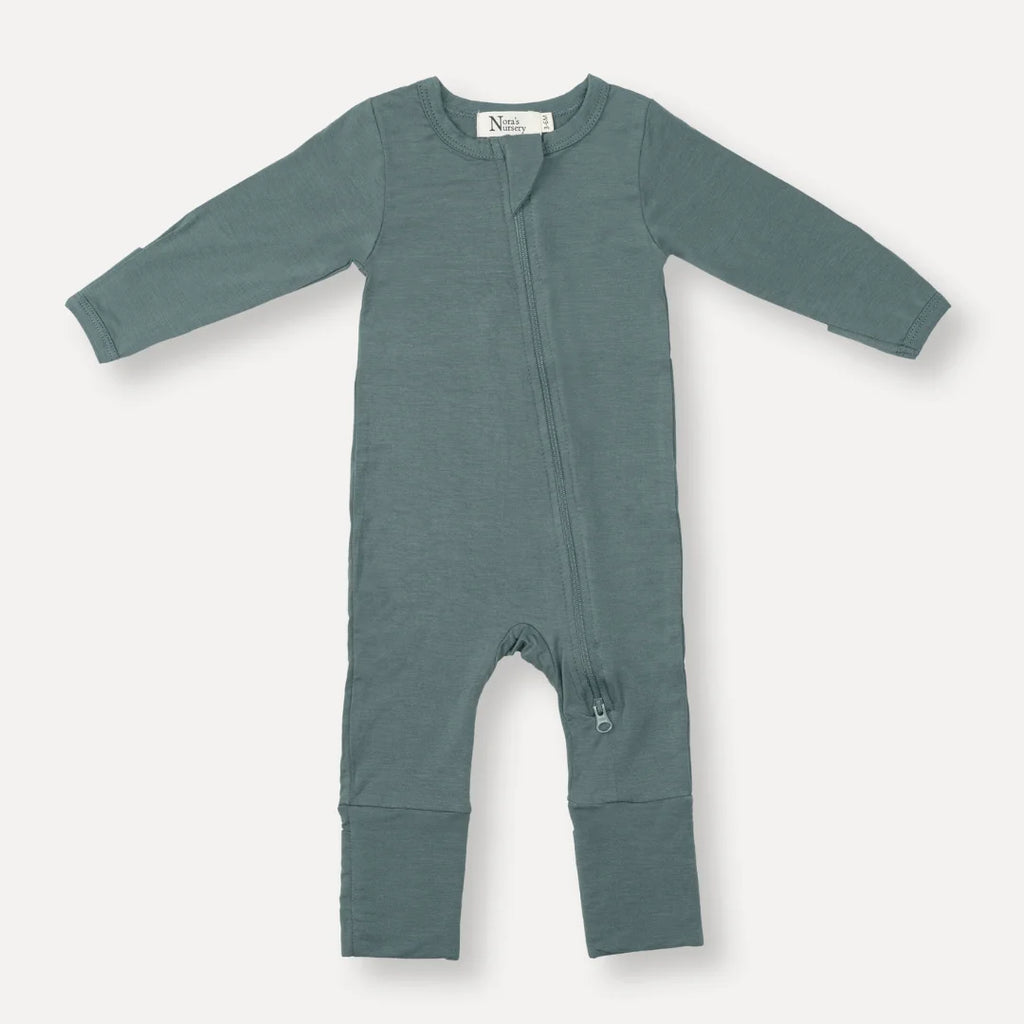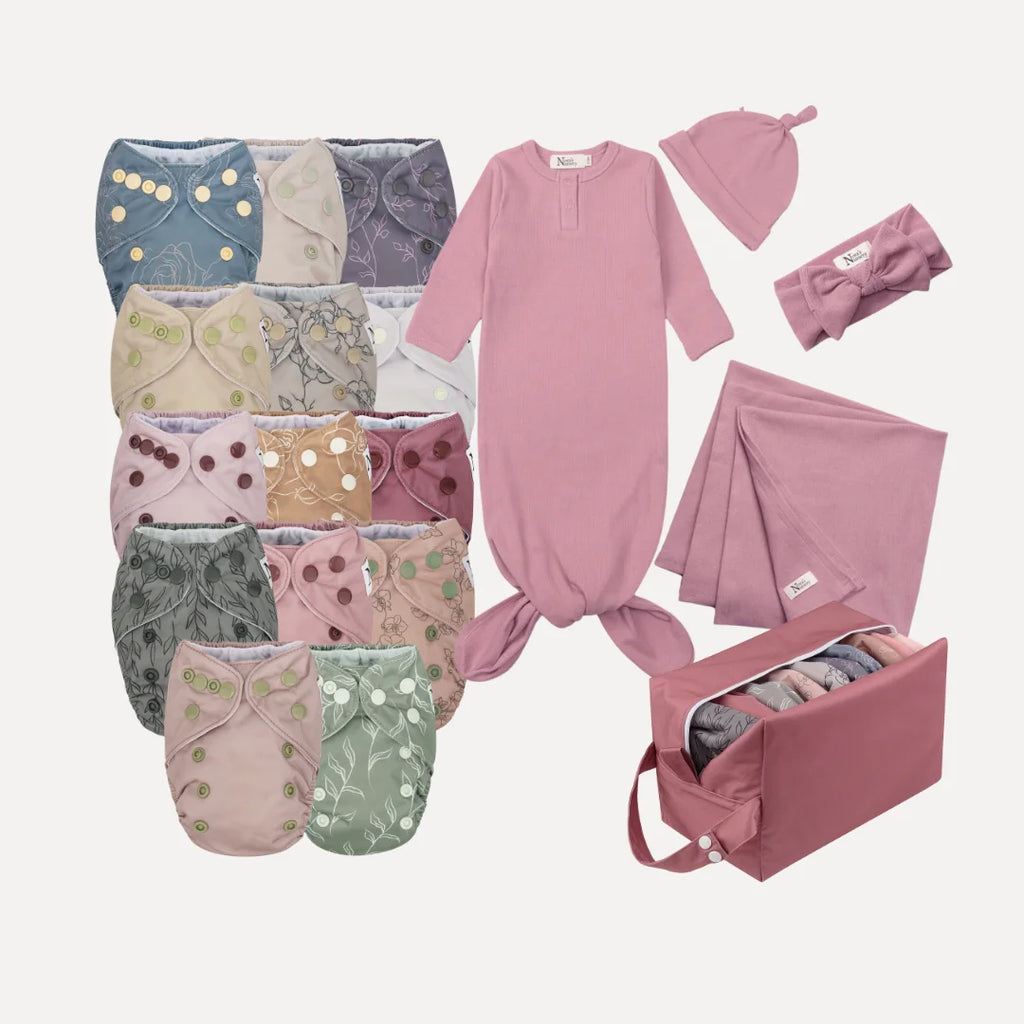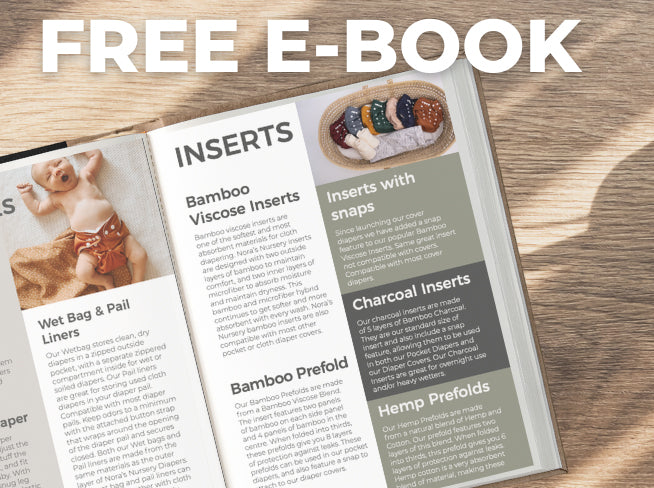Hard Water – The Basics
Understanding your water hardness is really important when cloth diapering. Hard water is the result of naturally high mineral content in your water. The high concentrations of calcium and magnesium found in hard water are deposited on faucets, fixtures, and on your fabrics. This high mineral content can reduce the cleaning performance of your detergent, and can leave clothes dull and dingy.
It can be very challenging to get a good clean on your cloth diapers if your laundry detergent isn’t performing at its best. This can lead to build-up of minerals, ammonia, stains and bacteria over time, causing stinky and leaky diapers!
If you have hard water, you may be tempted to strip cloth diapers on a regular basis to tackle the problems caused by mineral build-up. But stripping cloth diapers should only be done every once in a while - stripping should not be a regular part of your cloth diaper washing routine as it can be hard on fabrics. Not only that, it can be a nuisance, easily avoided by getting a handle on how to wash cloth diapers in hard water.
Let’s start by tackling the issues around hard water and cloth diapers. Effectively washing cloth diapers in hard water can be done if you incorporate slight adjustments to your washing routine.
Do I Have Hard Water?
If you are not sure of your water hardness, consider testing your water so you know what you are working with. You can check online for maps or other resources on water hardness in your area or contact your local water management agency. Click here to find your city/towns water hardness levels in these two comprehensive water hardness charts for both Canada and the USA!
But to know exactly what type of water you have, testing your water is the best bet. Test strips are easily purchased online or at hardwater stores or pet stores. Some pet stores will even test your water for free! Ensure to test the water straight from your washing machine, or at a source close to it so you can get the most accurate reading.
Why Does Knowing My Water Hardness Matter When Using Cloth Diapers?
Did you know that the quality of the water you use to wash your clothes plays a significant role in their cleanliness, longevity, and overall comfort? The same goes for cloth diapers, and understanding your water hardness levels is part of ensuring your cloth diapers are doing their job effectively! Our friends at Aquatell wrote an entire article on the importance of knowing your water hardness, why it matters when it comes to washing your cloth diapers.
The Breakdown:
1. Diaper Efficiency:
Hardness minerals build-up in fabrics over time. This residue can trap detergents and bodily fluids which can lead to persistent odours and a decrease in absorbency as the trapped residues prevent the fabric from fully absorbing liquids.
2. Effective Cleaning:
Hard water can interfere with the detergent's ability to clean diapers effectively. Hard water minerals react with soap and detergent making these cleaning agents less effective and leaving behind a residue that can make the diapers less absorbent and cause them to retain odours.
3. Continued Comfort:
Over time, minerals from hard water can accumulate on the fabric of the diapers, leading to build-up. This build-up from hard water makes fabrics stiff and less supple, and causes them to be scratchier for babies skin.
4. Reducing Irritation and Rashes:
Mineral residues left on the diapers can irritate your baby's sensitive skin, leading to rashes. Properly washing diapers according to your water hardness can help prevent these issues and keep your baby's skin healthy.
5. Optimizing Detergent Use:
Knowing your water hardness allows you to adjust the type and amount of detergent you use. In hard water areas, you might need to use more detergent or a specific formulation designed to work with hard water.
6. Extending Diaper Life:
You can prolong the life of your cloth diapers and preserve the integrity of the fabric by making sure they are cleaned properly. Other components of cloth diapers, such as plastic covers and velcro plastic snaps, can also deteriorate due to hard water.
Check out the entire article here!
Washing Cloth Diapers in Hard Water
If you are extremely committed to ridding hard water from your home, installing a mechanical water softening system is your best bet. But this is not always a feasible or realistic option for many households.
Instead, look for a good water softener that can be added directly to your washing machine. Choosing a water softener that binds to the minerals in hard water will help enhance the performance of your detergent, resulting in a good clean for your cloth diapers and other fabrics. If you are looking for the best detergent for cloth diapers in hard water, look for a commercial variety that already contains a water softening agent. Sodium-based ingredients, such as sodium carbonate and sodium citrate, are found in many detergents that work well in hard water. Check out more on our blogs The Best Detergents for Cloth Diapers and Hard Water and Cloth Diapers for some suggestions on the best detergent for cloth diapers in hard water.
Choosing A Water Softener
A good water softener can be incorporated into your washing routine to combat hard water minerals. Water softeners can be either non-precipitating or precipitating. Non-precipitating water softeners bind to hard water minerals, forming a solution that is washed away. Look for popular brands such as Calgon Water Softener or Cadies RLR Laundry Treatment. Precipitating water softeners bind to hard water minerals and form solid particles which are agitated away. Borax and Washing Soda (sodium carbonate) are common types that are easily accessible online or in your laundry aisle.
NOTE: Non-precipitating water softeners are generally more effective as they form a liquid solution that is washed away. Choosing a water softener that is non-precipitating may be a better option as regular additive to your laundry routine. Precipitating water softeners may be better suited for spot treatments and to make your own mineral stripping solution. Keep reading for a DIY mineral stripping solution that can be used to strip cloth diapers, even in hard water.
When washing cloth diapers in hard water, use a good water softener for both your rinse and main cycles. If testing indicates your water hardness exceeds 180 ppm, you have very hard water. You should be using a water softener for all your laundering activities. Use about 1/4 of a cup of softening agent per load. If your water hardness is above 250 ppm, consider increasing the amount to 1/2 a cup per load. If you’re water hardness is above 17 ppm but below 180 ppm, using a detergent with an added softening agent might be enough.
Stripping & Restoring Your Cloth Diapers in Hard Water
If you live with hard water, you understand the challenges that come along with it – especially if you are a cloth diapering family! Most households have hard water, and varying degrees of water hardness is normal. So, unless you have extremely hard water, you may not even notice it!
Hard water adds another element to your cloth diaper washing routine. Here we cover some of the basics of washing and stripping cloth diapers with hard water. Nora’s Nursery offers a more in-depth look at both cloth diapering with hard water and stripping cloth diapers in Hard Water and Cloth Diapers and in Stripping and Restoring Your Diapers.
Battling Hard Water Mineral Build-Up & Stripping Cloth Diapers
To undo the damage caused by hard water mineral build-up, strip cloth diapers following these steps, adapted from Fluff Love University:
- Start with clean cloth diapers. Do not attempt to strip cloth diapers that have not been thoroughly laundered.
- Fill your bathtub, laundry sink, top-loading washing machine or other container about 1/2 full of hot water – the highest hot water setting you can achieve is important here.
- Add a home-made mineral solution or store-bought laundry treatment and ensure it dissolves in the hot water. Keep reading below for advice on stripping solutions. If you are using a larger tub, you may need to increase the amount of stripping solution you use.
- It is recommended that you also add 1/2 a cup of a strong detergent, with enzymes, to improve effectiveness when stripping diapers.
- Soak your cloth diapers in this solution until the water cools. Ideally, 4 to 6 hours is best. Avoid soaking for shorter than 2 hours and longer than 8 hours.
Note: generally, pocket shells do not require stripping as they do not include any absorptive parts. You may want to strip the shells to rid them of mineral build-up, but stripping them on a regular basis should not be necessary.
- Stir occasionally.
- Drain and squeeze out remaining water.
- Run your diapers through a cold wash cycle without any detergent to remove any remaining stripping solution and detergent. Ensure to add your preferred water softener.
- A 30-minute bleach soak can help tackle any stubborn bacteria and staining. Bleach should not be used if you have a high iron content in your water. Keep reading below for tips on using bleach and suggested bleach alternatives.
- Wash your cloth diapers at least 2 times using a good washing routine to rinse away any remaining minerals. Ensure to use a water softener so that you don’t end up re-distributing minerals on your fabric. Visit Nora’s Nursery Washing 101 to help establish a good washing routine.
- Hang dry or dry on a low setting.
Stripping can be hard on your fabrics and can reduce the lifespan of your cloth diapers. Stripping should not be a regular part of your cloth diapering routine, but rather a solution to address extreme mineral build-up, ammonia or other issues. The best way to avoid stripping cloth diapers is to establish a good washing routine, choosing a water softener that works with your hard water levels, and regularly washing your cloth diapers to prevent bacteria and ammonia build-up.
Stripping Solution for Hard Water Mineral Build-Up
When looking for a good commercial product or a DIY stripping solution to strip your cloth diapers, you will notice that they generally include common water softening agents. A DIY mineral stripping solution is your best bet, as you know it will contain ingredients that strip cloth diapers while also tackling hard water mineral build-up.
This DIY solution is highly recommended for stripping cloth diapers:
DIY Stripping Solution: Mix together Washing Soda, Borax and Calgon. You only need 3 tablespoons of each for one stripping session. Considering you have hard water, it is recommended that you use all three ingredients as your stripping solution. But if you can only access one or two of the ingredients, increase the quantity of each – 1/4 cup of each if only using 2 ingredients, and 1/2 cup if only using 1. This solution includes both precipitating and non-precipitating water softeners, so will work well even with high mineral content in your water.
Commercial products, such as RLR Laundry Treatment or Calgon, are popular options for stripping cloth diapers. You may consider one of these if you aren’t able to get all the ingredients you need for a DIY solution.
Tips for Using Bleach
Bleach can be tough on fabrics, and not all bleaches work the same way. Because bleach can be hard on your cloth diapers, it should only be used when dealing with serious staining and stink.
To safely bleach cloth diapers, focus on the inserts where bacteria and stink primarily live. To do a bleach soak, use about 1/2 cup of bleach in cold water. Use a bathtub or top loading washing machine filled 1/2 full. Less bleach should be used for a smaller laundry sink or container. Place your freshly stripped and rinsed diapers in the mixture and let sit for 30 minutes. After finishing your bleach soak, follow up with at least 2 regular washes using a detergent of your choice along with a water softening agent.
If you have high iron content in your water, consider alternatives provided by Fluff Love University or keep reading our helpful tips below.
Tackling Stink, Residue Build-Up & Stains with Hard Water
Tackling some of the most common cloth diapering challenges involves getting to the root of the problem. Smelly diapers can result from ammonia build-up or bacteria build-up.
Ammonia build-up is the result of urea, a by-product of urine. Ammonia issues can result from the following:
- dirty diapers left too long before washing
- hard water minerals trapping urea in fabrics
- ineffective washing routine that uses too little or too much detergent
- longer stretches between diaper changes (like overnight periods)
- dehydration
All of these factors can result in ammonia stink on your cloth diapers. Hard water can be a big factor in ammonia build-up on your cloth diapers.
To tackle this, follow the instructions for stripping your cloth diapers above. Once your diapers have been reset, ensure to adjust your washing routine to incorporate a softening agent. Remember, don’t overdo it (or under do it) with detergent, and wash your cloth diapers regularly (preferably every 2 to 3 days). Overnight diapers should be rinsed immediately to prevent the build up of urea.
Bacteria build-up results in a distinctly ‘barnyard’ or ‘fishy’ smell and is generally caused by build-up of bacteria or soil left behind, even after diapers have been washed. This can become a serious issue when washing cloth diapers in hard water, as hard water prevents laundry detergents from working at their best.
Tackling bacteria build-up usually means running a deep clean or stripping your cloth diapers. It is recommended that a bleach soak be used to get rid of any bacteria or stubborn staining.
Check out Fluff Love University’s Do I Need to Strip or Bleach This for help troubleshooting and coming up with an action plan.
Getting Into a Hard Water Cloth Diapering Routine
Once you have tackled any mineral residue build on your cloth diapers, getting into a good washing routine that includes a good water softener should help you on your path to clean and stink-free diapers.
The most experienced cloth diapering families still run in to challenges every once in a while. Tackling ammonia build-up, residue build-up and bacteria may still happen. But a good washing routine should prevent the need to strip diapers on a regular basis.
When running in to any number of challenges, resetting your cloth diapers may be necessary. Following Nora’s Nursery’s instructions on Stripping and Restoring Cloth Diapers doesn’t change much when you have hard water. Using a mineral stripping solution that contains precipitating and non-precipitating water softeners will help combat pesky hard water minerals. Ensure that any steps that involve running your cloth diapers through the washing machine include the addition of a water softener. This is the most important aspect in fighting hard water minerals.
Key Tips and Tricks
- Often, tackling leaks and build-up can be addressed through a good wash routine. Key elements of your wash routine include the right amount of detergent, the right amount of water, proper agitation in your washing machine, and the use of liners or cloth diaper friendly diaper creams. Cloth diapers should be laundered every 2 to 3 days to prevent ammonia and bacteria build-up.
- Find the right water softening agent to help you combat hard water. Having your water tested will let you know how hard your water actually is and will help you decide on the best water softener for your laundry routine.
- A good cloth diaper detergent for hard water includes a water softening agent, like sodium carbonate. Look for this ingredient in your laundry detergent.
- Water hardness ranges. Anywhere between 17 and 60 ppm is slightly hard. Anywhere from 60 to 120 ppm is moderately hard. Anywhere from 120 to 180 ppm is hard, and 180 ppm or more is very hard. If your water is only slightly or moderately hard, you may be able to get by with a commercial detergent that also contains a water softening agent. With harder water, an added softening agent in addition to your regular detergent should be used.
- Get the right ingredients to make your own home-made mineral solution to strip cloth diapers.
- Staining on cloth diapers is normal! If your diapers are stink-free and do not leak, there is no need to run a harsh stripping or bleach soak. Allowing your cloth diapers some time to dry in the sun may be just what they need to help combat stubborn stains!
- If you want to avoid using bleach to sanitize and tackle ammonia or bacteria, you can use a mixture of Hydrogen Peroxide and Borax (4 cups of hydrogen peroxide with 1 cup of borax in a half-filled bathtub or half-filled top-loading washing machine of cold water). This option may be good for those with high iron content in their water, or when bleach allergies are a concern.
If you aren’t sure about the best method for deep cleaning or stripping cloth diapers with hard water, just Contact Us at Nora’s Nursery for a quick response.


